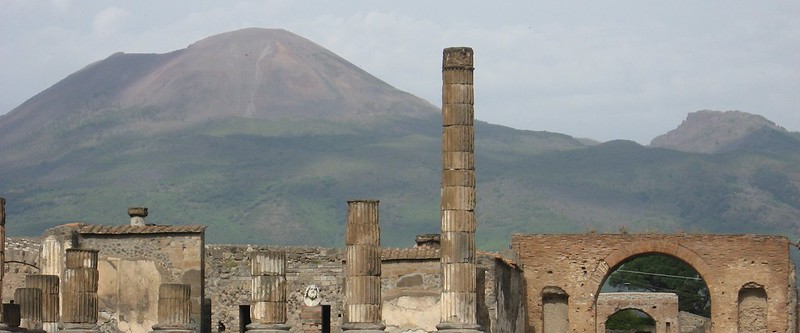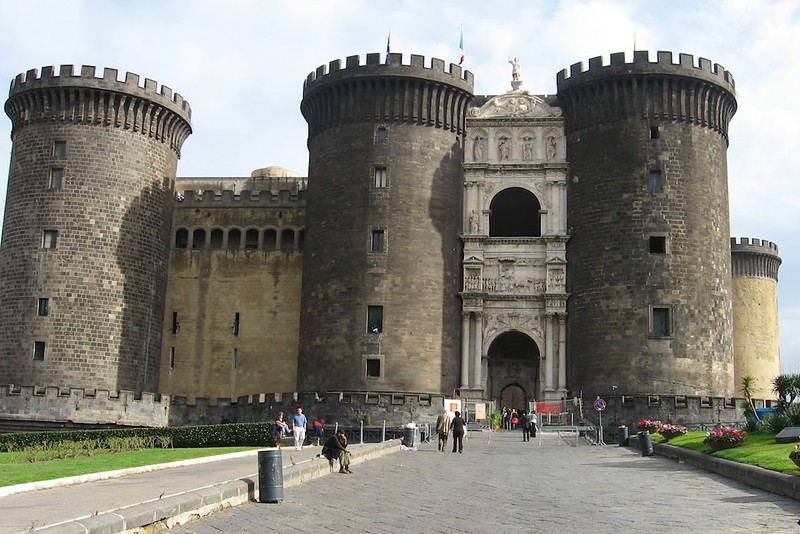Italy has long held the record for the largest number of UNESCO World Heritage Sites in the world, and as of 2020 is home to 58 such sights—leading second-place China by just two. UNESCO defines its World Heritage Sites as places “of outstanding universal value to humanity” and their addition to the World Heritage List is a move towards protecting them for future generations. Italy’s sights range from shoo-ins like the Vatican and Venice to obscure treasures like Sardinia’s prehistoric nuraghi dwellings at Su Nuraxi di Barumini and a group of structures collectively listed as “Venetian Works of Defence between the 16th and 17th centuries: Stato da Terra – western Stato da Mar”.
Why should you pay attention to the UNESCO listings? That Italy is one of the most culturally rich countries on earth is a given, and there is an endless array of ancient ruins, magnificent art and architecture, and historic cities and towns to explore. Unfortunately, however, this wealth of sightseeing options can be overwhelming and make it a challenge to focus on what to visit while traveling through Il Bel Paese. The UNESCO list is often a good jumping-off point for whittling down your itinerary to a few manageable treasures, especially on a first trip.
In this new series, we’ll periodically choose one of Italy’s regions and highlight its UNESCO sites for you to bookmark as a bare-bones “wish list” for a future trip. This week, we’ll kick off with the southern region of Campania, home to six outstanding UNESCO-recognized World Heritage Sites.
The Amalfi Coast
By far the most famous World Heritage Site in Campania is the Amalfi Coast, though most visitors have no idea that they are checking a UNESCO site off their list. Listed in 1997, this dazzling stretch of coastline along the Gulf of Salerno includes 13 villages (Amalfi, Atrani, Cetara, Conca dei Marini, Furore, Maiori, Minori, Positano, Praiano, Ravello, Scala, Tramonti, and Vietri sul Mare) representing “an outstanding example of a Mediterranean landscape, with exceptional cultural and natural scenic values resulting from its dramatic topography and historical evolution,” according to UNESCO.
Famous for its terraced Sfusato lemon orchards surrounding Amalfi and Ravello, 1st-century Roman villas of Minori and Positano, Vietri sul Mare’s ceramic tradition, and pastel-hued fishing villages clinging to the steep, rocky cliffs that rise directly from the turquoise waters of the Mediterranean, the Amalfi Coast is on most travelers default bucket lists, with or without a UNESCO nod.
See our tips for 48 Hours on the Amalfi Coast
Archaeological Areas of Pompei, Herculaneum, and Torre Annunziata
Campania’s second headliner is hands-down Pompeii, the ancient city famously destroyed by the eruption of Mount Vesuvius in 79 AD. Though Pompeii is the most famous Roman site in the region, the remains of nearby Herculaneum are even better preserved (and much less crowded) and the almost unknown Villa Oplontis in Torre Annunziata is home to some of the most spectacular ancient Roman wall paintings in the world. UNESCO listed all three together as a serial site (sites spread out over different locations that are related based on a common history or characteristic) in 1997, noting that “the impressive remains of the towns of Pompei and Herculaneum and their associated villas, buried by the eruption of Vesuvius in AD 79, provide a complete and vivid picture of society and daily life at a specific moment in the past that is without parallel anywhere in the world.”
Even if you’ve visited Pompeii on a previous trip, recent excavations and restoration work have unearthed a number of important discoveries over the past few years making it worth your while to take a second look. You can easily pair a visit to Pompeii with Herculaneum and even, for true archaeology buffs, a stop at Villa Oplontis.
Not sure about the differences between Pompeii or Herculaneum? Here’s our guide.
Naples Historic Center
Long snubbed for its gritty urban vibe, Naples is a treasure trove of history and architecture and has been a UNESCO site since 1995. “From the Neapolis founded by Greek settlers in 470 B.C. to the city of today, Naples has retained the imprint of the successive cultures that emerged in Europe and the Mediterranean basin. This makes it a unique site, with a wealth of outstanding monuments such as the Church of Santa Chiara and the Castel Nuovo.”
Naples is one of the oldest cities in Europe and its origins can be traced back to the 9th century BC when it was founded as the port city of Parthenope. It was later re-established as Neapolis, or “New City” in 470 B.C and its historic center is a fascinating patchwork of urban planning and architecture that has evolved over its long history, including the rectangular grid layout that still remains from its ancient Greek foundation.
The city is going through a modern Renaissance of sorts and is being rediscovered by travelers curious to experience an authentic Italian city, with both the grit and glory. Highlights of the historic center include the sumptuous churches and castles, world-class museums, warren of laundry-festooned lanes, traditional coffee bars and street food stands, and Via San Gregorio Armeno, known as “Christmas Street”.
No visit to Naples is complete without sampling its iconic local cuisine.
Royal Palace at Caserta with the Park, the Aqueduct of Vanvitelli, and the San Leucio Complex
One of the most fascinating day trips (and it takes an entire day to cover it all) in Campania is the sumptuous Reggia di Caserta, listed by UNESCO in 1997. The Royal Palace is a monumental complex built by the Bourbon King Charles III in the mid-18th century to rival Versailles and the Royal Palace in Madrid. UNESCO notes that it is “exceptional for the way in which it brings together a magnificent palace with its park and gardens, as well as natural woodland, hunting lodges and a silk factory.”
The lesser-known but equally captivating San Leucio complex was converted by King Ferdinando IV of Bourbon into a silk mill “to create an idealistic community of workers, who were guaranteed homes, schools, medical care, and all services. The huge building complex, set around the inner courtyards, became the symbol of a model society based on the value of work and equality.”
Finally, the aqueduct is “a stunning work of engineering and provides an extraordinary infrastructure not only serving the palace, the gardens and the future capital of the kingdom, but also the mills, the ironworks and the manufacturing industries located along its path.”
Be sure to read our guide to visiting the Caserta Royal Palace.
Cilento and Vallo di Diano National Park with the Archeological Sites of Paestum and Velia, and the Certosa di Padula
Many visitors to Campania never venture further south than the Amalfi Coast. But the Cilento coastline at the very southern reaches of the region, stretching from below Salerno to the border with Basilicata, is home to one of the most scenic parks and two of the most spectacular archaeological sites in Italy. A UNESCO site since 1998, it was “a major route not only for trade, but also for cultural and political interaction during the prehistoric and medieval periods. The Cilento was also the boundary between the Greek colonies of Magna Graecia and the indigenous Etruscan and Lucanian peoples. The remains of two major cities from classical times, Paestum and Velia, are found there.”
In addition to the spectacular Greek temples at Paestum and remains of the city of Velia, Cilento is home to the Carthusian monastery of San Lorenzo just outside Padula. A massive complex of more than 300 rooms and halls, the charterhouse was built in the early 1400s and features an enormous central courtyard, frescoed chapels, and a wood-paneled library. Cilento is also dotted with delightfully authentic villages and coastal towns plus traditional buffalo farms where true Mozzarella di Bufala Campana DOP is produced. Though close enough to the Amalfi Coast to merit a day trip, this area is still far enough off the tourist track to lend the thrill of discovery.
Intrigued by Cilento? Take a look at our overview of “Unsung Cilento” here.
Church of Santa Sofia in Benevento

Travelers who really want to venture far from the beaten path can head to the city of Benevento to admire the UNESCO-listed Church of Santa Sofia, part of the serial site “The Lombards in Italy. The places of power (568-774 d.c.) ”. During the Lombard reign, Benevento was the capital of Longobardia mino; the star-shaped Santa Sofia was commissioned by Prince Arechi II in the 8th century and remains one of the best-preserved examples of Lombard architecture in the area. The Sannio Museum, located inside the cloister, houses a collection of archaeological artifacts, prints, and paintings.








